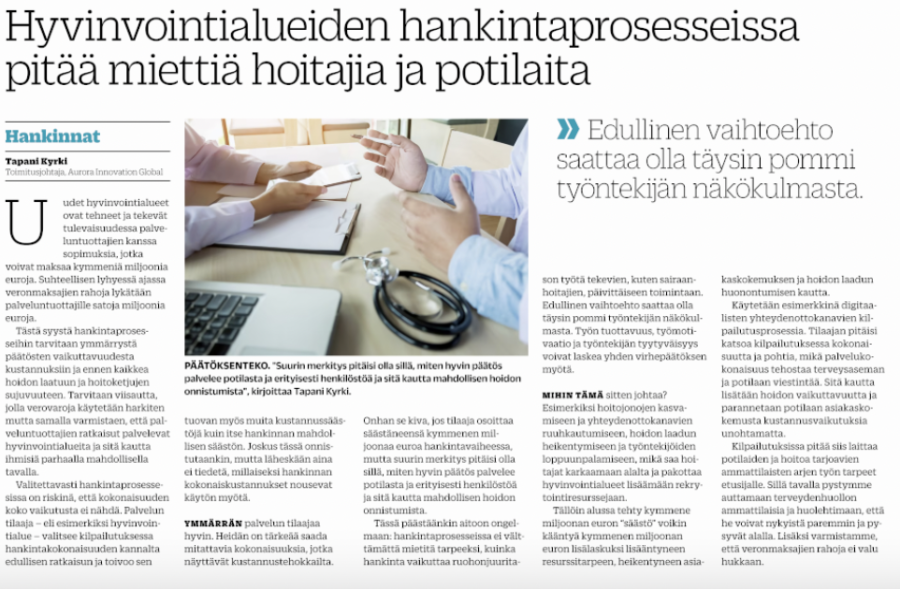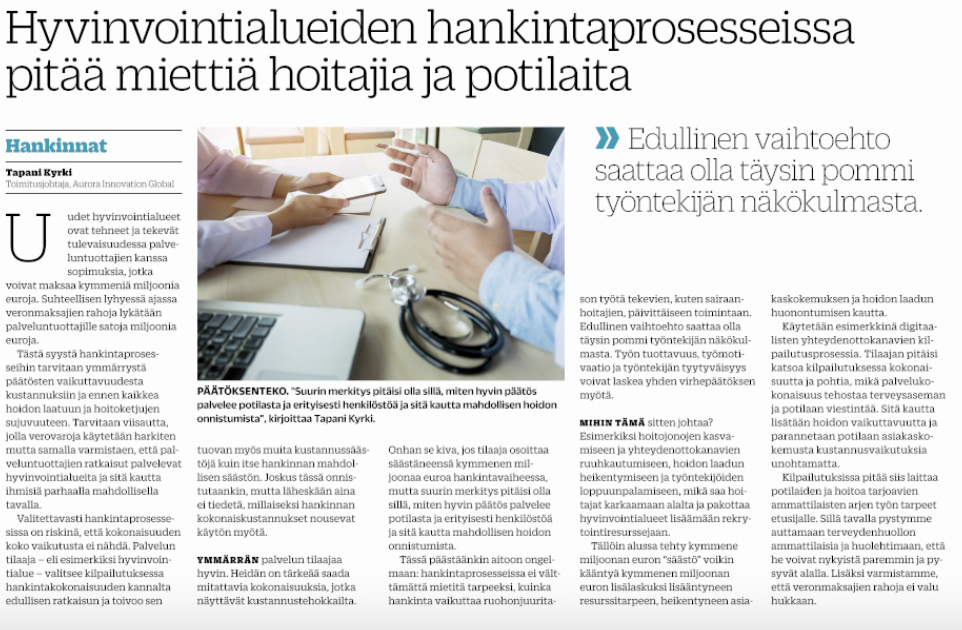Type of content
Nurses and patients need to come first in large-scale renewal and acquisition processes
2023-03-29
by Pia
The new wellbeing services counties in Finland have made and will make agreements with service providers that can cost tens of millions of euros. In a fairly limited time, hundreds of millions of the taxpayers’ money will be handed over to these service providers.
This is why those in charge of the acquisitions processes need to have a solid understanding of the impact that these decisions on costs have and, above all, on the treatment paths and the quality of care. There needs to be wisdom that ensures that tax euros are spent with consideration while also making sure that the solutions acquired serve the wellbeing services counties and thus people in the best possible way.
Unfortunately, there is a risk in the acquisition processes: with heavy focus on cost savings, the long-term impact of the acquisition may not be considered well enough. The buyer of the service – for instance, a wellbeing services county – will choose the most inexpensive option, hoping it will bring in other cost savings as well. Sometimes, this is successful, but we don’t always have transparency into how the overall costs of the acquisition will rise in the long run.
I understand the person making the acquisition decision well. It’s important for them to purchase extensive solutions that look cost-efficient. Of course it’s great if the buyer is able to show they have saved 10 million euros in the acquisition. However, the most significant aspect of any acquisition should be how well the decision serves patients and healthcare personnel.
This leads us to the real problem: There may not be enough time spent on considering how a specific acquisition will impact the daily work of nurses. An inexpensive option may be a complete dud from an employee’s point of view. Productivity, motivation and job satisfaction may worsen as a result of just one bad decision.
Where does this lead us? Well, for example, longer waiting times to get healthcare, overwhelmed contact channels, poorer quality of care, and employees burning out – all leading nurses to leave their jobs.
That 10-million-euro saving can turn into an additional bill of 10 million euros.
Let’s take the example of a tendering process for digital channels. The buyer should look at the big picture and consider what kind of a service package would improve the communications between a healthcare center and its patients. With this simple shift in thinking, the efficacy of care and the patient’s customer experience will improve – while also bringing in cost savings.
The needs of patients and healthcare professionals should have priority in tendering processes. This way, we can help healthcare professionals and ensure their improved well-being for longer careers in the healthcare profession. At the same time, we’ll make sure that taxpayers’ money won’t be wasted.
Tapani Kyrki
CEO

Do you have a question?
If you have a general question, feel free to use the form on the right. If you have a question about sales, partners or support, please select this form instead
